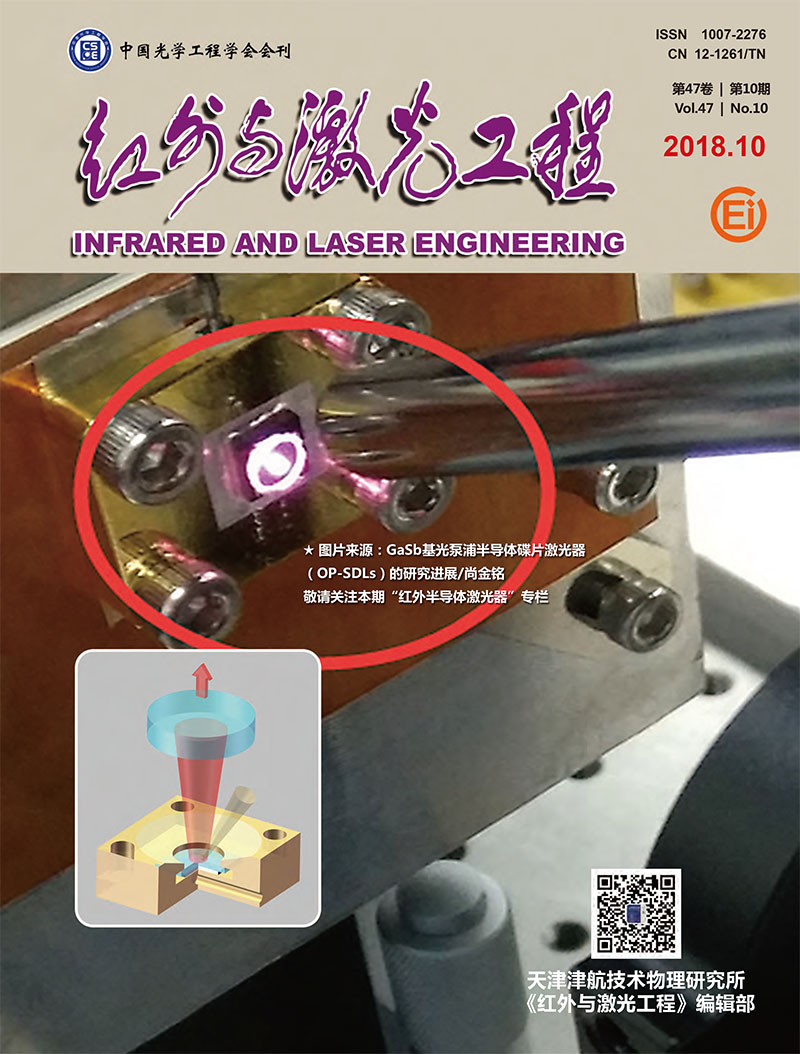Huang Da, Huang Shucai, Zhao Wei, Lu Yi, Cao Wenhuan. Fuzzy recognition of missile tail flame spectrum[J]. Infrared and Laser Engineering, 2018, 47(10): 1026001-1026001(6). doi: 10.3788/IRLA201847.1026001
| Citation:
|
Huang Da, Huang Shucai, Zhao Wei, Lu Yi, Cao Wenhuan. Fuzzy recognition of missile tail flame spectrum[J]. Infrared and Laser Engineering, 2018, 47(10): 1026001-1026001(6). doi: 10.3788/IRLA201847.1026001
|
Fuzzy recognition of missile tail flame spectrum
- Received Date: 2018-05-13
- Rev Recd Date:
2018-06-17
- Publish Date:
2018-10-25
-
Abstract
The analysis of the missile plume shows that the main factors influencing its spectral change include the engine, fuel, etc., so the purpose of missile model recognition can be achieved according to the tail flame spectrum. In order to ensure the efficiency of recognition, the characteristic spectrum was used to represent the plume characteristics, which can greatly reduce the data volume. Firstly, the radiation difference of each wavelength was calculated according to the spectral difference model. By setting the threshold value, the radiation difference segment was obtained, and the band of higher than the threshold was the selected characteristic band. Changing the number of steps and thresholds can obtain several sets of different data. The Spectral Angle Matching algorithm (SAM) and fuzzy algorithm were used to deal with the data of different precision and different feature bands. The accuracy of the recognition results and the similarity distance between the samples and the different spectra were measured, and the fuzzy algorithm can identify with SAM, but it was better than SAM in algorithm complexity.
-
References
|
[1]
|
Yurdanur-Tasel E, Berberoglu H, Bilikmen S. Investigation of materials of different crystal structure under various time delays using double pulse laser induced breakdown spectroscopy[J]. Spectrochimica Acta Part B:Atomic Spectroscopy, 2012:74-79. |
|
[2]
|
Xu Yanke, Yang Yan, Jing Zhanrong, et al. Analysis of how US defense support program (DSP) satellites to select the right waveband[J]. Infrared Technology, 2009, 31(4):202-204. |
|
[3]
|
Cai G B, Zhu D Q, Zhang X Y. Nmerical simulation of the infrared radiative signatures of liquid and solid rocket Plmes[J]. Aerospace Science and Technology, 2007(11):473-480. |
|
[4]
|
Devir A, Lessin A, Lev M, et al. Comparison of calculared and measured radiation from a rocket motor plme[C]//AIAA, 2001:0358. |
|
[5]
|
Qin Lanqi, Wang Hongyuan, Zhang Aihong, et al. Modeling and simulation of missile tail flame flow field characteristics[J]. Infrared and Laser Engineering, 2014, 43(12):3877-3882.(in Chinese) |
|
[6]
|
Wang Darui, Zhang Nan. Measurement of engine tail flame flow field based on infrared technology of liquid rocket[J]. Infrared and Laser Engineering, 2017, 46(2):0204003. (in Chinese) |
|
[7]
|
Wang J N, Gu X F, Ming T, et al. Classification and gradation rule for remote sensing satellite data products[J]. Journal of Remote Sensing, 2013, 17(3):572-577. |
|
[8]
|
Zhong Xiaojiao. Hyperspectral data, unmixing and spectral matching[D]. Nanjing:Nanjing University of Science and Technology, 2013.(in Chinese) |
|
[9]
|
Bai Jiwei. Research on spectral matching based on high spectral database[D]. Beijing:University of Chinese Academy of Sciences, 2002. (in Chinese) |
|
[10]
|
Chen Yang, Zhang Taining, Guo Peng, et al. Research on the method of complex spectral quantitative analysis based on principal component analysis[J]. Acta Optica Sinica, 2009, 29(5):1285-1291. (in Chinese) |
|
[11]
|
Huang Da, Huang Shucai. The characteristic spectrum in the image of the missile plume fuzzy recognition[J]. Acta Optica Sinica,2018, 38(2):0230002. (in Chinese) |
|
[12]
|
Dong Yucui. Research on optimm band selection method for point target detection under specific background[D]. Beijing:University of Chinese Academy of Sciences, 2015.(in Chinese) |
-
-
Proportional views

-









 DownLoad:
DownLoad: